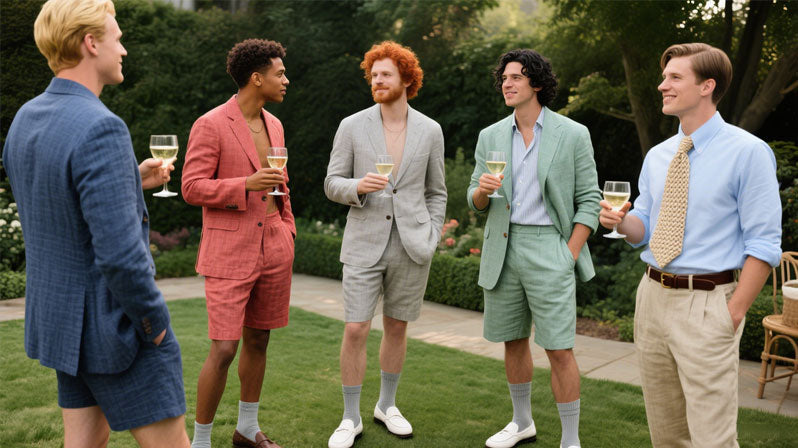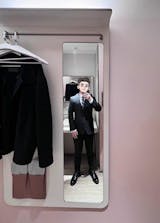
The rise of the shorts trend: from niche to mainstream
Gone are the days when a suit was always paired with tailored trousers – the trend for suit shorts has emerged, seamlessly blending formality with effortless style. This style, born out of a desire for summer formality, first gained popularity in the Mediterranean, where warm weather demanded lighter clothing while still maintaining a stylish feel. Today, it's a must-have for urban streetwear, beach weddings, and even semi-formal occasions, offering a versatility unmatched by other fashion fusion styles. Designers have further elevated this trend, using premium fabrics and precise tailoring to transform even the most daring choices into sophisticated statements.
The Golden Rules of Styling a Suit with Shorts
There are three key principles to styling suit shorts: fit, fabric, and balance. First, fit is key. Shorts should hit just above the knee—too short can look unrefined, while too long can defeat the purpose of a trend. Jackets should adhere to standard suit sizing, with sleeves reaching to the wrist and shoulders fitting snugly to the cuffs. Second, fabric choice is seasonal. Linen, cotton and linen blends, and lightweight wools are ideal for summer because they are breathable and drape beautifully. Avoid heavy fabrics like tweed or thick wools, as they can look out of place and uncomfortable. Finally, strike a balance between formal and casual wear. Layering a crisp dress shirt under a jacket maintains a refined look, while a polo shirt or fitted T-shirt can soften the look for daytime.
Footwear: The Make-or-Break Element
Your choice of shoes can elevate or undermine your suit-and-shorts outfit. For a polished yet summery vibe, loafers (leather or suede) are the gold standard—they’re sleek enough to complement the suit jacket but casual enough for shorts. For a more laid-back look, clean white sneakers add a modern twist, perfect for brunch or a day of sightseeing. If the occasion calls for something dressier (think a beach wedding), leather sandals (avoid flip-flops!) work well with lighter-colored suits. Steer clear of heavy boots or formal Oxfords, as they create a jarring contrast with the shorts.
Color and Pattern: How to Stand Out (or Blend In)
When it comes to color, neutral tones like navy, beige, khaki, and light gray are foolproof—they’re easy to mix and match, and they exude timeless style. For those feeling bolder, soft pastels (mint, blush, light blue) are perfect for summer, adding a playful touch without being over-the-top. Patterns should be used sparingly: a subtle pinstripe suit jacket pairs well with solid shorts, while a floral or checkered shirt under a solid jacket adds visual interest. Avoid clashing patterns (e.g., a plaid jacket with striped shorts) unless you’re confident in your styling skills.
Occasions Where a Suit with Shorts Works (and When to Skip It)

Final Tips to Master the Look









